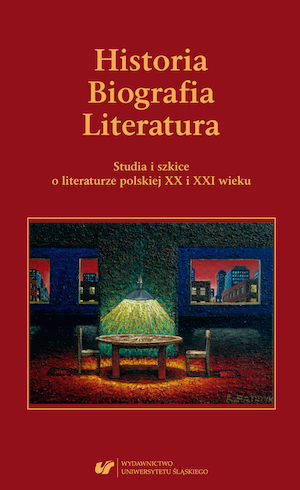

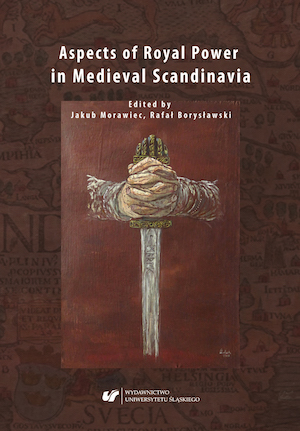
Keywords: royal power;Middle Ages;Scandinavia;
References to the deeds and lives of the past monarchs and their commemorations are ubiquitous in the earliest extant Scandinavian literary sources. Their authors found relating to the narratives of royal power and the identification with the bygone kings and queens essential for the legendary and historical stories of national and personal origins, and for the ways of formulating and expressing the political and cultural significance of their own work. In the wealth of the material offered by Old Norse and Icelandic literature, we may find numerous examples of the texts either abounding in such connotations or drawing directly upon royal histories. Although the originals of the lists of kings (konungatal) did not survive beyond the early medieval era, they provided later medieval authors with fundamental inspiration especially for the kings’ sagas (konungasǫgur). Similarly, the vividness with which the past rulers were remembered is attested by the poems like Ynglingatal and Haleygjatal originating in the tenth century. Both of them legitimize the power and aspirations of subsequent monarchs by referring to the heritage and legacy left by the previous generations of kings. Their charisma and achievements contributed to their mythical and historical status as rulers, which, in turn, determined the development of what may be called the ideology of royal power. Understood as a set of features considered decisive for prosperous and memorable kingship, such ideology was advocated and praised by the skaldic poets and saga authors who emphasised the importance of royal bravery and generosity, the mercilessness that kings should display towards their enemies and the graciousness they should show to their followers. Likewise, the unfailing luck in war and the ability to surpass others in various skills were deemed important not only to impress one’s royal retinue and subjects, but, predominantly, also to legitimize royal claims. (fragment of the introduction)
More...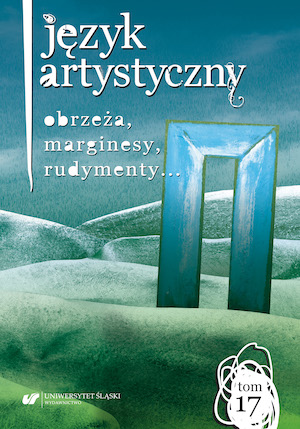
Keywords: stylistics; artistic language; Polish language; Polish literature
There are a few topics considered in the monograph. One can distinguish among others: question of perimeters in artistic oeuvres, cultural phenomena of margin character and their manifestations in literature, main streams versus niche, different understanding of non/normativeness, interfusion, collages, nebulosity of genres, styles, discourses, changes of subject category (e.g. posthumanism, transhumanism). All of them could be treated as detrituses, remains, scraps as a new perspective of world description, expression of many system metamorphosis of artistic language, style and discourse.
More...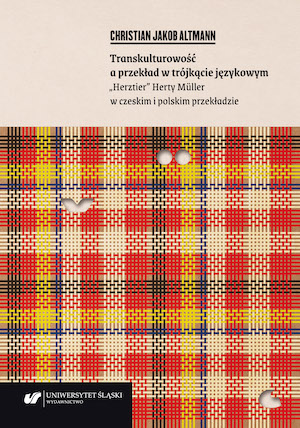
Keywords: Herta Müller; transculturalism; artistic translation; linguistic worldview; minorities; dictatorship
This work is dedicated to literary translation in a language triangle, consisting of one Germanic language (German) and two typologically and culturally related West Slavonic languages (Polish and Czech). The analysis of the translations into Czech and Polish of the novels Herztier and Atemschaukel written by Herta Müller is a contribution to the description of translatability from the perspective of a language triangle in which each language is involved in different factors of understanding the texts created in it.
More...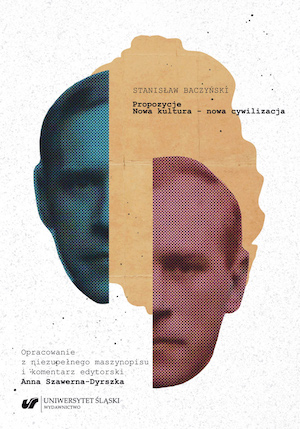
Keywords: archive; typescript; Europe; 20th century; civilization; culture
The typescript of Stanisław Baczyński's unfinished dissertation has been found in the writer's archive stored in the Adam Mickiewicz Museum of Literature in Warsaw. The work, diagnosing the state of European civilization and culture after the First World War, was created in the second half of the 1920s. In the text, the author not only referred polemically to contemporary ideologies (fascism, communism, nationalism, but also Christianity) and the historiosophical concepts prophesying the end of culture (Spengler, Berdyaev), but he also formulated his own optimistic project of a "new", "revalued" European culture. The typescript found is not a complete text. The edition, combining the principles of traditional and genetic editing, captures the character of the work in the process of writing, unclosed and non-definitive. Detailed rules of editorial conduct, as well as the history and characteristics of the typescript, are presented in the Introduction. The Appendix to the edition contains fragments of the work, found in the monthly magazine "Europa", that are missing from the typescript. In order to bring the reader closer to the character of Baczyński's work on the printout prepared earlier, also scans of selected typescript cards have been included in the Appendix.
More...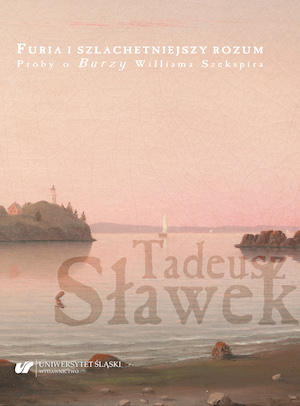
Keywords: sea; island; sailing; art; language; forgiveness
As Stephen Greenblatt claims The Tempest summarizes all major preoccupations of other plays: legitimate power is abolished, civilization is threatened by wilderness, discourse is besieged by the darkness of inarticulate sounds, and theatrical performance looms large as a metaphor of human life. It is the final play of a great master and hence one is tempted to venture a hypothe-sis that, perhaps Shakespeare’s Prospero, like Ulisses in the XI canto of Odysei, speaks to us from the other side, from a dark and mysterious island of the dead, and his theatre is the only way in which we could approach death in the epoch of broken rituals and general disenchantment. Thus, Prospero’s famous line at the end of the play “Our revels now are ended” declares not only the end of the time of performance but refers to a much wider, Kermodian, sense of ending.
More...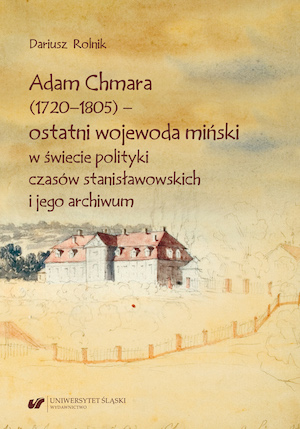
Keywords: Lithuania; Adam Chmara; the nobility of Stanisław August's time; family archives;the Sapieha family;
The biography paints the portrait of Adam Chmara across different walks of life, as a nobleman anda citizen who aspired to count himself among the powerful and mighty Polish statesmen duringthe reign of Stanisław II Augustus. Politically, he can be counted among the staunch reformers ofthe Polish-Lithuanian Commonwealth; privately, he was a caring husband and father, and a benevolentmaster who on the one hand valued profit, but who valued his subordinates as well; a kind,generous and polite man. Theoretically, then, he presents a picture of a man virtually devoid offlaws; nonetheless, a lot of the hypotheses and suppositions that appear here are not the fault ofthe author but rather the subject of this biography. One thing which, in theory, should surprisethe reader with regard to the figure of Chmara is his talent for adaptation to new, unforeseencircumstances, which seems to be his dominant feature; but is it just his individual characteristic?Jarosław Czubaty wrote in detail about the principle of two consciences among the citizens of theCommonwealth, but is it not merely a reflection of nearly the entire generation of intellectual elitesof the Enlightenment persuasion, which emerged during the reign of Stanisław II Augustus? Oneof their most fundamental principles was the professed love for the motherland and its subjects,as well as the acknowledgment of the necessity of the betterment of people’s social and materialcircumstances, accompanied by the complete lack of any kind of determination or sacrifice madein order to achieve these goals. This, of course, is merely a hypothesis; however, the fear of takingresponsibility for the fate of the country — whose origin is difficult to determine — is a rathercurious phenomenon. It could be argued, of course, that it originated in the desire to protect thenobles’ estates, their families, or other reasons, but that alone cannot account for everything. Onthe one hand, then, the phenomenon could be attributed to particular reactions to the unfoldingevents, but on the other hand, it could be also attributed to this Enlightenment mindset whichconstituted the guide for people’s behavior; in a world governed by reason, pragmatism and logicrule over everything else, and it is only once we acknowledge that fact that we can discuss thejustification — the principle of two consciences.
More...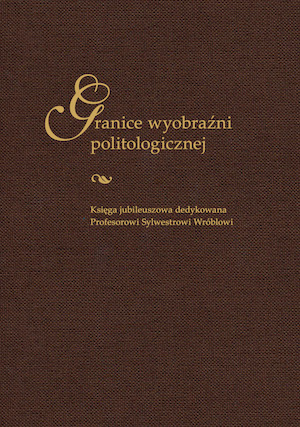
Tom zawierający kilkadziesiąt opracowań z zakresu nauki o polityce napisanych przez współpracowników i przyjaciół Jubilata z różnych ośrodków akademickich w kraju, stanowiących wyraz uznania dla jego dorobku naukowego i dydaktycznego.
More...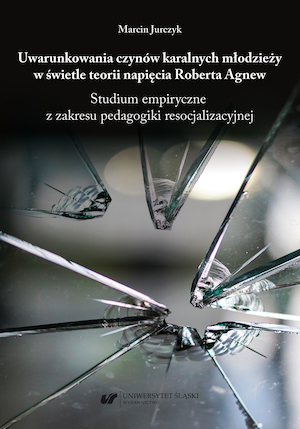
Keywords: Robert Agnew’s General Strain Th eory; adolescence; aggression; anxiety; juvenile delinquency; social maladjustment; resocialisation pedagogy
The subject of the theoretical considerations and empirical analysis of this dissertation are the environmental and subjective factors contributing to adolescents’ anti-social behaviour (behaviour breaking social rules and the law). The revealed tendency to aggressive behaviour has a key role in diagnosing the correlations between the sense of strain, demonstrated level of anxiety and aggression and delinquent behaviour. The theoretical basis for this research were the assumptions of Robert Agnew’s General Strain Theory (1992). The main aim of this work was to explore the existing correlation between variables in the scope of the strain (its types), limiting factors (social control, differential associations) and subjective variables (aggressiveness and anxiety) and illegal and anti-social behaviours demonstrated by the analysed adolescents from rehabilitation centres and high school students’ anti-social behaviour.
More...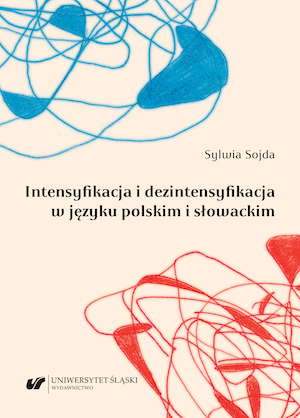
Keywords: category of intensity; intensification; deintensification; attenuation; atenuator; intensifier; deintensifier; kind of action; expressive verb; prefix; suffix; prefi xoid; prefixal-suffixal formant
The category of intensity is an interesting semantic category reflected in language on many levels. The subject of the description in the dissertation is the broadly defined category of intensity in the Polish-Slovak confrontational aspect (which includes dynamic processes of intensification and disintensification), and presented on the example of formal morphological exponents, through the prism of the part of speech: the adjective and the verb. The research on verbs was conducted from the perspective of the kind of action. Comparing these processes shows that the Polish language has a more significant resource of morphological exponents indicating the intensification process. In contrast, the Slovak language has a richer means of signalling disintensification.
More...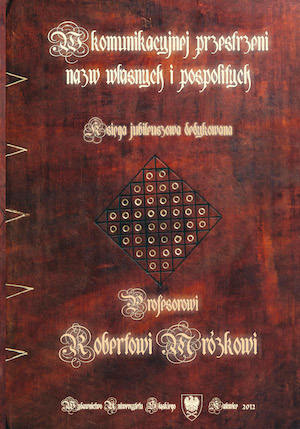
Keywords: Robert Mrózek; communcation
Zbiorowy tom poświęcony Profesorowi Robertowi Mrózkowi charakteryzuje się rozmaitością tematyczną i metodologiczną. Dzieli się na trzy części: I. W przestrzeni onimicznej, II. W przestrzeni apelatywnej, III. W przestrzeni komunikacyjnej. Różnorodność podejmowanej przez autorów poszczególnych tekstów problematyki (46 artykułów) jest jednym z wielu walorów księgi. Tom ten z całą pewnością stanowi nie tylko ciekawą i pożyteczną lekturę dla językoznawców oraz dydaktyków, którzy interesują się onomastyką, dialektologią oraz zróżnicowanymi zjawiskami komunikacyjnymi, lecz także dla wnikliwego czytelnika zainteresowanego zmianami języka zachodzącymi na różnych jego płaszczyznach.
More...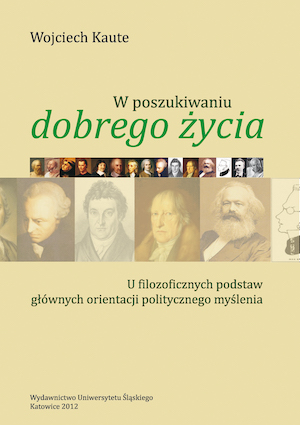
Keywords: state; history of ideas; political ideas; "good life"
A human being gets organized in a nation, as Aristotle says, for “a good life”. However, according to him, one has to differentiate between “a good citizen” and “good man”. The history of philosophy has created various polis conceptions as a result of the fact that a human being, in its cognition, cannot situate itself in a position of the one who knows an “objective” good, “truth”. Each cognition is just a “vision” and interpretation of the world. Thus, one has to assume that a reflection on culture equals a reconstruction of these “visions”. This is a history of ideas. Such a reconstruction is also an interpretation. The situation gets complicated in the post-world. Traditional languages lose their significance in a global world of mass culture. And that means that the status of the history of ideas, this interpretation of interpretations, gets too unclear these days.
More...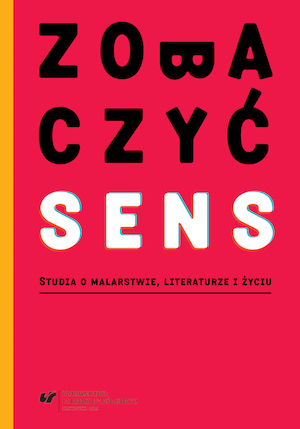
Keywords: painting; literature; life
Książka zawiera cykl artykułów, których autorzy podejmują próbę wskazania sensu w procesie twórczym, kontaktach z otoczeniem, wyborach drogi życiowej. Pytania o sens bywają dziś bagatelizowane, relatywizowane albo zastępowane stwierdzeniem bezsensowności wszystkiego. W tak niesprzyjających okolicznościach autorzy, wśród których znaleźli się nie tylko teoretycy i komentatorzy cudzej twórczości, ale również artyści-praktycy, zdobyli się na odwagę poważnej refleksji o paradygmatach wartości, świadomości celu, porażkach, przezwyciężaniu trudności.
More...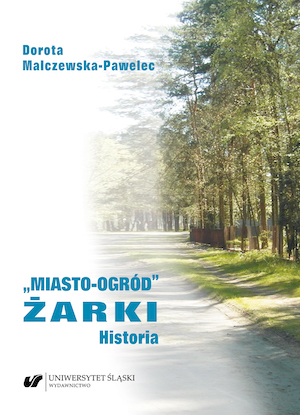
Keywords: garden city; Second Republic of Poland; Karol and Stefania Raczyński; Żarki; parcelling out; Polish history
The book presents the history of founding of a summer resort, at present known as Żarki Letnisko, located in the Jura Krakowsko-Częstochowska region. The settlement is a very rare example of a successful subdivision of manorial land in the interwar Poland with a view to create a “garden city”, comparable to that of Podkowa Leśna near Warsaw. The process of developing the “garden city” of Żarki is presented against a broad backdrop of ideological, social, and economic transformations taking place in the Second Polish Republic. The book also portrays the founder of the “garden city” of Żarki – Karol Raczyński from Złoty Potok, as well as his wife Stefania and his most famous ancestors coming from aristocratic families of Krasińscy, Braniccy and Raczyńscy. Furthermore, the general concept of “garden city” is discussed, along with its evolution and reception on the Polish lands.
More...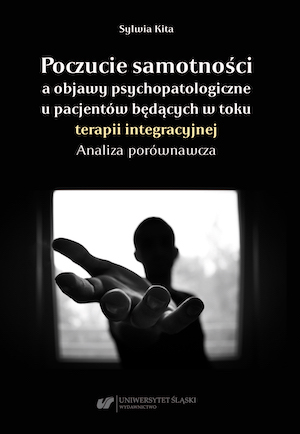
Keywords: psychology; psychotherapy; integrative psychotherapy; mental disorders; loneliness
The book introduces the essence of integration psychotherapy and integrative psychotherapy as perceived by Jerzy Mellibruda. The reader will get acquainted with a thorough analysis of the concept of psychotherapy, the profession of a psychotherapist, therapeutic relationship, personal patterns, psychopathological symptoms and a feeling of loneliness. In addition, s/he will find here a case report of a patient undergoing psychotherapy and a thorough analysis of the course of the therapy process. The publication has a scientific value and contains an in-depth analysis of the research results of patients participating in a natural experiment based on a quasi-experimental plan with one research group and the initial and final measurement. It can be used as supplementary reading for psychology students as well as psychotherapists and psychiatrists interested in the results of research in the field of psychotherapy and treatment of mental disorders. The book is also a source material for discussion and further research on the effectiveness of integrative psychotherapy.
More...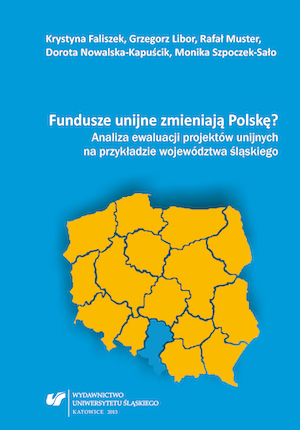
Keywords: European funds; Silesian voivodship
The volume mainly concentrates on presenting the issues connected with conductingevaluative studies from the practical point of view. The focus is, among other things,on practical aspects of the realization of evaluative studies of the projects financed fromthe European resources in the Silesian voivodship. The authors of the volume wanted toshow the issues concerning the realization of studies aiming at a diagnosis of the effectsof the external interference undertaken within the frame of the projects realized in theSilesian voivodship.The studies, the results of which, encouraged us to present this publication wereconducted in a qualitative way, by means of a questionnaire containing dispositions toquestions in over ninety districts and counties of the Silesian voivodship. Thanks to it,the material gathered also allowed for some basic quantitative analyses. The questionnairegivers, the role of which was performed by our students, asked the representativesof self‑governmentinstitutions in districts and counties, responsible for the realizationof European projects in a given unit, to make information on not only the projects assuch, but above all their evaluation available. The initial questionnaire questions concernedthe project itself and its classification as regards the programme (“Human Capital”Operational Programme, Regional Operational Programme of the Silesian Voivodship,as well as a priority, action or sub‑action).The next questions concerned ways ofevaluating the project. Here the questions asked for a definition of evaluation used for thepurposes of its realization, the subjects taking part in the evaluative study, the criteria ofselecting the evaluators, aims of the evaluative study, the type of the study in terms of itssubject, aim, time, nature of evaluator, evaluative criteria, methods and techniques usedin the study, the final report as well as its structure, and, last but not least, recommendationsderiving from the evaluative report. This way, an interesting study material wasgathered, the analysis of which allowed for making a few conclusions worth presenting.The first chapter of the volume presents basic information on the usage of Europeanresources in Poland, putting an emphasis on the Silesian Voivodship. A lot of attentionwas paid to the Regional Operational Programme of the Silesian Voivodship, within thescope of which the broadest stream of European funds comes to the regions. The secondchapter, apart from raising strictly methodological issues and problems directly resultingfrom the study realization, presents a characteristic of different elements of the evaluationssuch as types of evaluations, their aims, functions, criteria and final reports, aswell as how the evaluation is really perceived, and what role it is ascribed. In the thirdchapter, on the other hand, three selected examples of the so called good evaluativepractices, namely evaluative studies that can be considered as model and worth imitatingwere described. These were the evaluations of the following projects: „Droga doprzyszłości szkół w Przystajni”, „Szansa dla Ciebie”, and „Skorzystaj z szansy”. The bookcloses with a chapter devoted to the Generator of the Application Forms of the „HumanCapital” Operational Programme, that is a programme that serves the application forEuropean resources and their obtainment.We would like our publication to become useful both for the students already startingto deepen their knowledge on evaluative studies, and practitioners who, realizingvarious programmes and projects financed (or co‑financed)by the European resources,have to know how or prepare and conduct the evaluative studies or evaluate if the evaluationconducted by external experts was realized according to the principles of researchreliability.
More...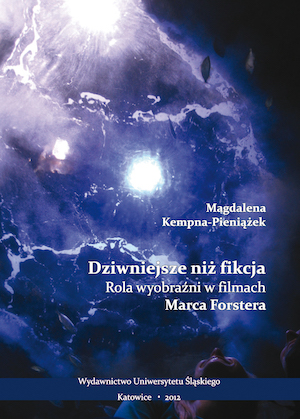
Keywords: Marc Forster’s movies
The book was devoted to the place Marc Forster’s output is given in the categoryof imagination. In the first part the author outlines the most important theoriesof imagination, starting from the ancient conceptions and phenomenology to contemporaryphilosophy and film thought. When discussing the opinions of suchresearchers as Gaston Bachelard, Jean-Paul Sartre, Hanna Segal, Paul Ricoeur,Edgar Morin and Gilles Deleuze conclusion on a multidimensional understandingof this problem and its entanglement into contemporary redefinitions of suchcategories as memory can be drawn.The second part of the book constitutes a collection of analyses of Marc Forster’smovies (Finding Neverland, Stay, Stranger than Fiction, The Kite Runner, Monster’s Ball,Quantum of Solace). The author presents the levels on which the concept of imaginationunderstood as a psychological, aesthetic or philosophical , and, above all,anthropological category appears in director’s works in five subsequent scenes.In her interpretations, she makes use of different research tools, including, RenéGirard’s or Roland Barthes’ theories. She also refers to, among others, the problemsof movie authorships, postmodern movie, contemporary collections of phantasms,and the occurrence of mythic structures in pop culture at the turn of the 20th and21st centuries. Although the most popular Forster’s works constitute the core issue,the author also touches upon his less known projects, such as a debuting movieEverything Put Together or a commercial LX Forty.Conclusions from the analyses conducted, included in the book, correspondwith the latest theories of imagination. In the light of Forster’s works imaginationpresents itself as a category tightly connected with memory, identity or subjectivity
More...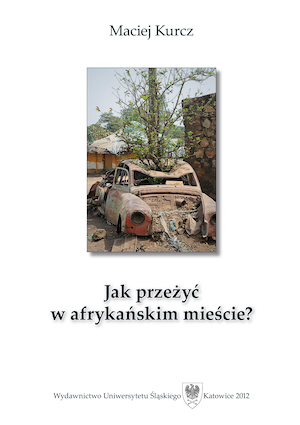
Keywords: African city; urbanisation in Juba, South Sudan
The subject of the study entitled How to survive in an African city? A human inthe face of borderlineness and urbanisation in Juba, South Sudan is the spontaneouscity spreading process of Juba, the capital of South Sudan. But, the viewpointtaken while describing the phenomenon in question is the one of daily activitiesof an average human being, who in this particular case is a recent urban migrant.All the factographic data come from the series of ethnographic research conductedin Juba, South Sudan in the years 2007—2008.Adapting to the new environment is a fundamental matter for every migrant.It is not an easy task. For this very city is characterized by extremely harsh livingconditions. There is not enough water supply and no sewage system, not mentioningthe electricity. The drastic price increase results from the underdeveloped publictransport infrastructure and, what is more, the migrants of various ethnic andcultural origins, usually intertwined with traditionalism and conservatism, add tothe picture. This kind of melting pot makes the majority of city-dwellers feel alienated.What is even worse, the already tensed atmosphere is overlapped by manifoldtraumatic war experiences. From our perspective, Juba is a dysfunctional city.Colloquially, it could be called a safe haven or even a strongbox, that is the placewhere for now one has the greatest chance to survive in the post-war South Sudan.Therefore, it reminds more of a refugee camp than a city. In spite of difficultiespiling up in front of them, newcomers try to familiarize the hostile surroundingsby finding a job and, as far as possible, turning their flats into places tolive, conceptualizing the landscape, organizing their time, facing the lonelinessand alienation, to blend into surroundings. In short, they struggle to survive, andconcurrently, try to definitively cut away the past of the urban migrant or repatriatedrefugee. For the inhabitants, family is the value of utmost importance in copingwith everyday problems. It is one of family’s basic tasks. For that reason it isstructured in a particular way, mostly as a nuclear family, but frequently also temporarilyextended to the closest relatives. The structure of family is formed toa high degree by manufacturing capacities of its members, hence in the city’s realityone cannot forget to generate income. It is in family where genetically differentcultural traditions (African, Islamic and Christian) blend and unite into one,which makes them indistinguishable from one another. One of the institutionsthat clearly illustrate this situation is marriage, where the dialogue between varioustraditions, between the “old” and the “new” reality, is perfectly visible. Theinflux of alien elements is not in a least seen as hostile. Quite the contrary, wecan observe the tendency to express cosmopolitism through that which is local.The social hierarchy in the city is characterized by mutual dependence ofdiverse social groups. Never before has the life in the city depended so much ona cooperation and the engagement in generating income of each member of a family.The phenomenon manifests itself on every level of social identification. Inthe entire Africa, the voluntary association of a different kind have become ananswer to the structural crisis. On the continent, social groups such as womenand children acquire the significance. Their role increase in importance, especiallyeconomically. Concurrently, this growing importance is not followed by the improvementin the poor social status of those groups, since there are still excludedand discriminated against. Generally, the citizen of Juba copes with her/his financialproblems similarly to inhabitants of other African cities. Apart from havinga full-time job to earn indispensable money, in order to balance the family budget,she/he has to also be engaged — more often than not, in the same time — in manyinformal extra jobs (small businesses, producing and selling food, trans-bordertrade). Frequently, all members of a family participate in such a activities. Thus,diversification of the income sources is a universal strategy. Every member of a city-living family (male or female, including the youngest) is engaged in both formaland informal ways of earning money. No one is economically useless.Citizens of Juba help themselves by seeking economic connections with neighboringAfrican cities. Those appear to be especially financially gratifying. An inhabitantof African city to thrive has to be extremely active spatially — and be notonly to cross the border of her/his own neighborhood but also to leave her/his hometown.Obviously, huge significance of the practice of that kind stems from thecloseness of the country border. Ex-refugees are the leaders of trans-border contacts.Those people are actual intermediaries between Sudan and neighbor countries.By their mobility their transmit the new cultures, elements of democracyand free-market economy. It is a very useful knowledge in terms of nowadaysJuba reality.The ethnicity of Juba is naturally pertained to certain dimensions of reality(e.g. politics, culture), for which it seems important and overemphasized. In otherdimensions it seems marginalized or even hidden. The city creates new identifications,but also sustains, reproduces and strengthens the old ones. Ethnicity is dynamicand appears more and more relative — it is based on the situation of an individual,her/his needs in the urban environment. But essentially, the city isa place with no ethnicity at all, it peculiarity stems form this fact.What is formed in the city are the new, broader identifications. Firstly, theirbond is the war-time wandering. Fundamental cultural transformations are triggeredby the emigration. Those changes are visible regardless of the social origin ofan observer. The Sudan conflict had the features of a religious war. Among others,it has lead to kidnapping religion by politics, and exercising the “friend — foe” categories.The results of this are palpable in the post-war Juba — the city of culturesand conflicts. Religion seems there a pivot of national identity, which is dra-matically visible in the city’s Muslin community. Creed is used by both Christiansand Muslims to erase the ethnicity. It rests as a kind of umbrella opened over theheads of people representing different ethnicities, giving a chance to adjust easilyto the city’s community. The religion of the greatest importance is Christianity. Ittreated as a natural source of the city culture, its plays as well as secular rituals.One cannot also forget about the significance of various Christian churches forcommon man facing everyday difficulties. Facilitating the initial stage of her/hiscity life, when the individual is in the most urgent need of help. In this sense, theChristian churches of Juba are a kind of bridge between the village and the city.Thus, despite the difficulties, the city’s development is visible, which stemsmore from the bottom-up initiative of the common individuals than this of the localauthorities. Juba is a world tediously built by the hands of its inhabitants. Itsshape and size reflect their ambitions and abilities. The phenomenon of borderlineness— the closeness of the country’s border — appears to be helpful in this process.It influences the effectiveness of the citizens’ activities, it is an answer to thespontaneous city spreading processes — it brings danger, but most of all, infinitepossibilities.
More...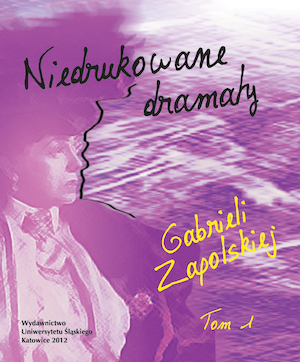
Keywords: Gabriela Zapolska; Polish literature
More...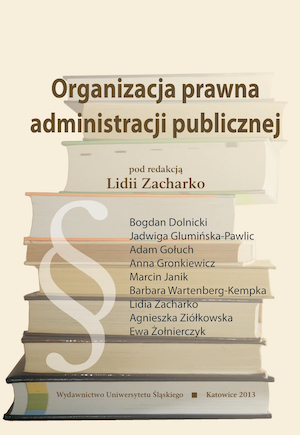
Keywords: public administration
The very book contains a deepened theoretical analysis of the legal organizationof the public organization. The authors do not only present normativesolutions, which happens in books to be found on the publishing market fromtime to time, but thoroughly analyse these solutions, making justified criticalcomments at the same time. What should also be underlined is the fact that thevery perspective allows for tracing legal changes concerning the organizationand functioning of the public administration, pointing to the standards derivingfrom the rules of a democratic country of the law.What is very accurate is the fact that the what the authors considered essentialwas a presentation of subsequent stages determined by the system reformsin the country, that is, changes in the system of the territorial self-government, alegal separation of the departments of the government administration that gavethe possibility of precisely defining the scope of the government administrationand consolidating a legal position of the prime minister or changes in the legalstatus of a voivode and local bodies of the government administration.According to the authors of a new system construction, a new shape of thepublic administration in the field in the government part was to above all guaranteekeeping safety, peace, and public order, for which responsibility in the lightof new law regulations in this respect, is held by a voivode as a head of unitedservices, guard and inspection, being liable for the result of their actions.The public administration is exercised not only by the country, but alsopublic and legal unions, as well as other subjects of administration. It should betreated as a whole from the legal, organizational and functional point of view.The book, due to the originality of its contents within the scope of the legalorganization of the public administration may appear incredibly useful for boththeoreticians and employers of a broadly-understood administration, as well asstudents whose teaching programmes cover the aspects of the system of thepublic administration.
More...